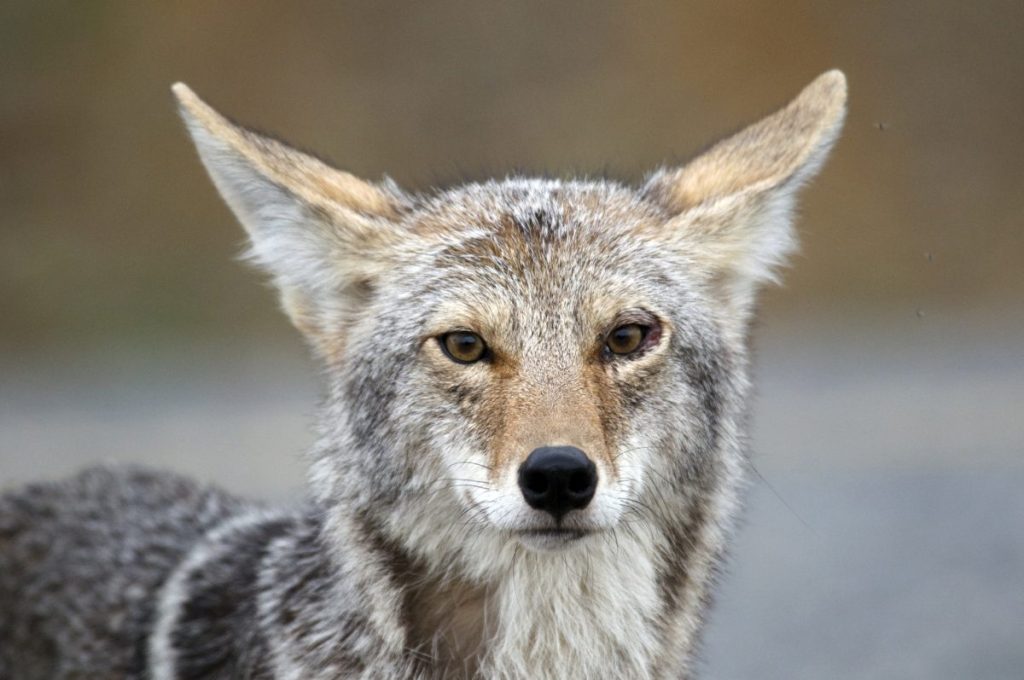A walk in the woods is often beneficial for both dogs and their owners. But it’s important to practice safety when taking your dog outside, even in suburban environments where you might not expect encounters with wild animals. Wildlife attacks on pets aren’t usually a day-to-day occurrence, but some situations can turn deadly for pets and their owners. You can help keep your pet safe by learning about what animals attack dogs.
The good news? Most attacks are preventable, and there are steps you can take to ensure your and your pets’ safety when coexisting alongside wild animals. With that in mind, there are six primary wild animal suspects you should avoid when keeping your dog safe outside.
What wild animals attack dogs?
Coyotes
Sometimes referred to as the ‘prairie wolf’, this canine is often associated with the South, but can be found just about anywhere in the United States. This species used to be much less numerous, but after wolves were eradicated, the coyote’s population exploded. Despite popular belief, coyotes aren’t always lone animals and frequently are found traveling in small packs.
Coyotes aren’t inherently dangerous – they will frequently be scared away by larger dogs. However, in suburban areas, where life is often hard for wild animals, coyotes can create dangerous interactions with dogs. Medium to large-sized breeds will often be viewed as competition for resources, while small breeds may be viewed as prey. This doesn’t make coyotes ‘mean’ or ‘bad’ – they act on instinct.
Supervise your dog even within your backyard if you live where coyotes are common. Coyotes can dig under or jump fences. If you have a small dog, like a Chihuahua or Pomeranian, be especially careful to watch it while it plays outdoors. Coyotes and subsequent attacks can sometimes be deterred with repellents; commonly used repellents are bottled urine from wolves and mountain lions, which naturally predate on coyotes.
Wolves
Wolves are unlikely to be a problem for you and your canine unless you live in one of the few ranges where they are common. These canines are frequently considered dangerous wild animals that threaten pets and livestock. However, there have only been three fatal attacks on humans in the last century – one was by a rabid wolf and one by a pet wolf. Statistically speaking, a wolf attack on a human is almost impossible.
Attacks on our furry companions, however, are more common. Usually, these attacks occur on livestock guardian dogs. You’re unlikely to encounter a wolf in a suburban environment like you would a coyote. If you live in a location where wolves are present, use caution when walking wilderness trails, and don’t allow your dog to roam off-leash. However, wolves rarely approach environments where humans are present, so you likely don’t have to worry about a wolf appearing in your neighborhood.
You may have seen feel-good stories about wolves and dogs becoming friends. Although wolves are the ancestors of our pet dogs, they aren’t prone to happy coexistence. If you spot a wolf, don’t let your dog approach. Keep them on a leash and try to leave the area. A wolf is more likely to view your charging dog as an attacker than a new playmate.
If a wolf attacks your dog, don’t try to intervene in the fight. Instead, try to scare the animal off with a loud sound, like an air horn.
Bears
Bears have become an increasingly common ‘problem’ wild animal for dog owners in recent years. Why? Bears are suffering from habitat loss and fragmentation, which has led to more and more bears (and other animals) showing up in suburban environments in search of food. Black bears are the species you’re most likely to see browsing bird feeders or trash cans. This species is notoriously shy and will likely retreat if you make a commotion.
However, an off-leash dog approaching a bear can be considered a threat. Bears are particularly aggressive when mother bears protect their young cubs in spring. Keep your dog leashed if you’re walking through an area where bears are present. And if bears are sighted in your neighborhood, keep an eye on your pup even if they’re contained in your backyard.
Mountain Lions
The mountain lion, also commonly known as the puma or catamount, is North America’s only big cat (with the exception of jaguars, which occasionally stray from their more common habitats in Mexico). Mountain lions can weigh over 200 pounds, making them a fearsome predator to be avoided. Additionally, they are very territorial and are known to attack pets and humans even when unprovoked if they perceive them as invaders of their territory.
Small dogs are less likely to be considered a potential threat but more likely to be considered prey. It isn’t uncommon for mountain lions to take unsupervised cats or small dogs as a meal. If you live in an area where mountain lions are common, be especially cautious when exercising your pets. Avoid nighttime walks if possible. Consider staying outdoors while your pet plays in the backyard to keep an eye on them. Consider joining a dog walking group to go on outings with; mountain lions are less likely to approach a group of people than a single person.
Snakes
To the credit of snakes, many are much smaller than our canine companions; it’s understandable that our playful and boisterous pets would make them feel threatened. Dogs also don’t understand the warnings snakes provide before striking. The rattle of a rattlesnake’s tail, a universal ‘run!‘ to humans, is just confusing to a playful pup.
If your dog is bitten by a snake, try to identify the species. If you’re unfamiliar with snakes, note important details – the shape of the snake’s head, body, and notable colors and markings. Then, bring your dog to the vet ASAP. If the snake is venomous, you have a limited time to get your beloved pet treatment. Luckily, for incidents where your dog is bitten by a non-venomous snake, you likely will need very little veterinary intervention.
You can avoid snakebites by using caution when entering snakes’ habitats. Like other wild animals, snakes aren’t passionate about attacking – they’re just defending themselves and their territories. Some dangerous snakes, such as venomous cottonmouths or copperheads, are common around water, so use caution when swimming in lakes or rivers.
Alligators
Alligators are uncommon in most of the U.S. – dog owners residing in New England or the Midwest, you don’t need to worry. But for dog owners who live or vacation with their pets in the South, alligators are a reasonable worry. You won’t see alligators when hiking in most forests, but habitats near water, such as beaches or marshes, can provide homes for alligators. Sadly, alligators may still attack dogs in suburban areas. Despite alligators’ large sizes, they are easily hidden in the water, and you may not even know they’re present.
Exercise caution when entering alligators’ habitats with dogs. Small dogs can be carried away entirely by an alligator; these large reptiles don’t know the difference between a pet and any other prey, and they will behave naturally by grabbing onto any prey they think they can easily take. Don’t bring your pets swimming in lakes or rivers where alligators are known to dwell. Instead, consider bringing them to a safer place to swim, like a fenced-in pond or pool free of gators. You can even create backyard fun by setting up a kiddie pool or sprinkler system for your furry friend.
Safety around wild animals that attack dogs
North America provides homes for a plentiful expanse of wild animals ranging from the species mentioned here to foxes, pine martens, and bats. If you exercise caution, you’re unlikely to negatively interact with a wild animal, but it’s important to be aware of the wild animals that attack dogs. Keep your pet leashed when exploring nature. There are designated places to allow your pet to run off-leash, such as dog parks, where you don’t need to run the risk of your pet startling wildlife.
There are things you can do around your home to prevent wildlife encounters. Consider installing fencing; this is enough to keep out most, but not all, unwanted visitors. Repellents can be used to make your home inhospitable to wildlife. Use caution when putting out food sources like bird feeders, cat food, or open trash receptacles, all of which can be easy meals for wildlife.









